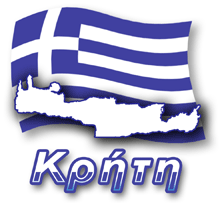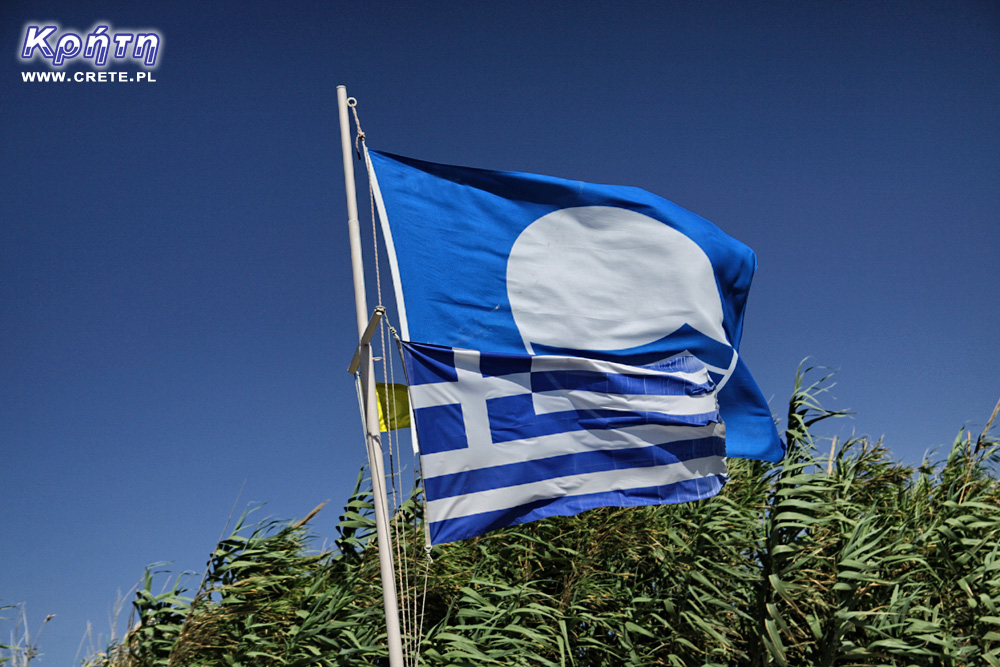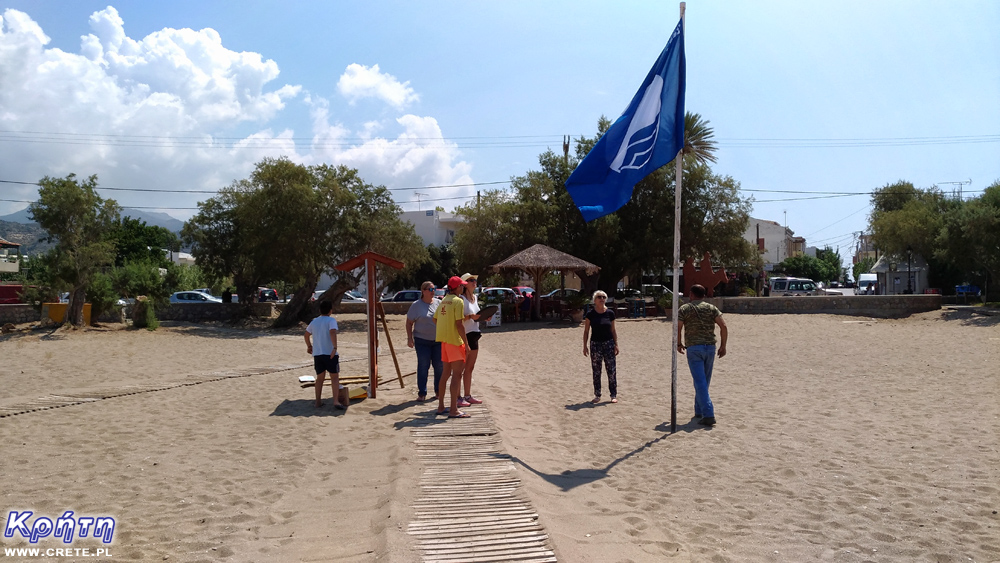
 2023-05-13 20:45:52
2023-05-13 20:45:52
As many as 617 Greek beaches, 18 marinas and 6 tourist ships have been awarded the Blue Flag internationally this year. Greece ranked second out of 52 countries for the second year in a row, accounting for 15% of the awarded coastline. Only Spain has more distinguished beaches, which has been winning first places for many years. In the case of Greece, it is worth noting that this year the number of awards granted exceeded 600 for the first time. As for Crete, this year the characteristic blue flag will appear on the island in 139 places, which means that last year's result (128) has been significantly improved.
Lassithi prefecture has the most awarded beaches (48), followed by Chania (38), Heraklion (33), and Rethymno traditionally has the fewest (20). You can find the list of distinguished Cretan beaches at the end of this article.
This year, the city beach of Voulisma in Istro, which is the most popular beach in the municipality of Agios Nikolaos, did not receive this award. Voulisma is a beautiful sandy beach where it is difficult to find a piece of free space during the season. Turquoise water, sand and a beautiful bay attract a large number of tourists, which benefits the town and local entrepreneurs from the tourism industry. However, the Greek Society for the Protection of Nature decided not to award the beach this year. The reason is the plastic waste that regularly washes the beach on the sea currents and the remains of microplastics. The persistent presence of sea litter at this location is due to its geographical location and not negligence on the part of local authorities, but the criteria for awarding the Blue Flag are strict. The presence of waste means that the mandatory beach cleanliness criterion has not been met. The municipality is trying to deal with this troublesome problem, even signed a contract for the lease of a boat to collect garbage floating in the water.
The decision to deprive Voulisma beach of the blue flag is very controversial, because at the same time two neighboring beaches: Agios Panteleimonas and Karavostasi, struggling with the same problem with waste, received an award this year.
The awards have been granted since 1987 to those beaches and marinas that meet stringent requirements and criteria. Over the past several years, the Blue Flag has become the most recognizable and popular international symbol of high-quality beaches and marinas in the world. A uniform standard for this award was developed in 2001 by the Foundation for Environmental Education (FEE) in Denmark. In Greece, the Blue Flag is awarded by the Hellenic Society for the Protection of Nature (EEPF), which coordinates this programme.

Interestingly, since 2021, the characteristic blue flags have been produced 100% from used PET bottles. They are collected in supermarkets and other collection points in Western Europe. The bottles are chopped into small flakes, which are then melted down into polyester yarn, which is used to create the fabric that is ultimately used to make the flags.
The history of this award dates back to 1985, when the idea of distinguishing coastal communes characterized by high water quality was born in France. Two years later, in 1987, this idea was launched as an official European program known as Blue Flag. Initially, the awards were to become an incentive for bathing water managers to meet the assumptions of the European Council Directive on the reduction of pollution of bathing water and its protection against further pollution (Council Directive 76/160/EEC of 8 December 1975). Over the next several years, the simple and clear concept of marking the best beaches and marinas was also positively received by tourists in the European Union. Work has begun on changing the rules to allow the award to be introduced in other countries around the world. Since 2001, after establishing uniform rules, this label has become an international symbol of the best beaches.

Beaches applying for the right to use this mark must meet 33 criteria imposed by FEE (in the case of marinas it is 38 criteria, 51 for pleasure boats). The precondition for this award is excellent water quality. No other quality classification, not even "good", is acceptable. Below we present the most important criteria that are taken into account. They are divided into four issues within which detailed conditions are specified.
Clean sea and coast
Coastal organization
Guest safety
Protecting nature and caring for the natural environment
Municipality of Kantanos-Selino
Municipality of Kissamos
Platanias Municipality
Municipality of Chania
Apokoronos Municipality
Municipality of Rethymno
Mylopotamos Municipality
Municipality of Agios Vassilios
Malevizi Municipality
Municipality of Iraklio
Phaistos Municipality
Agios Nikolaos Municipality
Sitia Municipality
Ierapetra Municipality
 2023-05-13 20:45:52
2023-05-13 20:45:52
Komentarze
Wypełnij poniższy formularz aby dodać komentarz
lub kliknij w poniższy link aby skorzystać z możliwosci komentowania przez facebooka:
https://www.facebook.com/crete.poland/posts/619078350266433